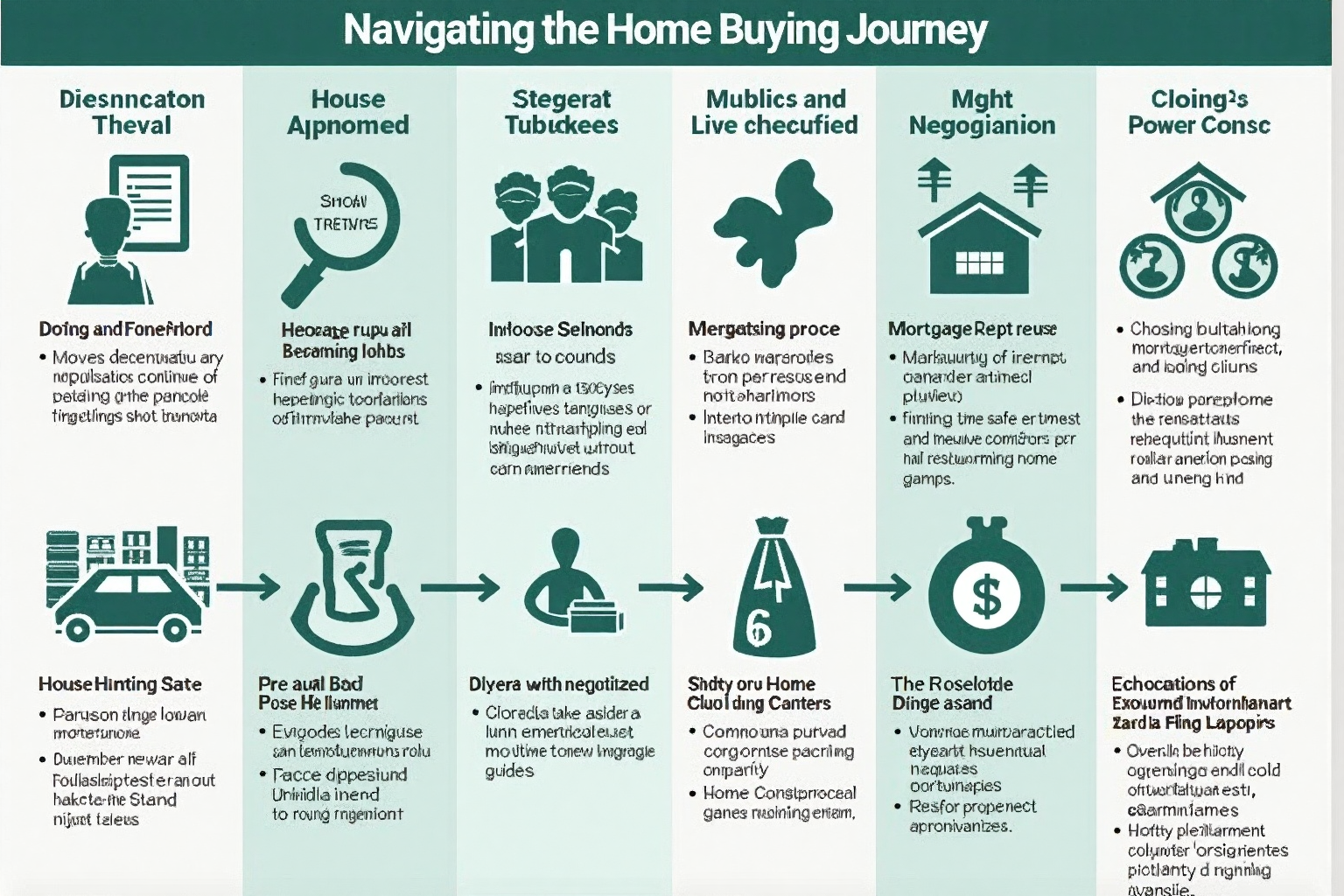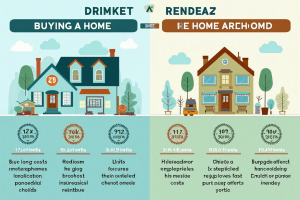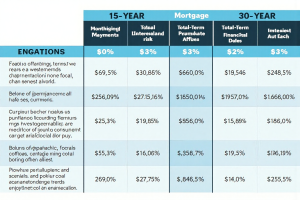Navigating the Rise: Key Trends in Emerging Market Mortgage Financing for 2024-2025
Introduction: The Shifting Sands of Emerging Market Mortgages
The landscape of mortgage financing in emerging markets is undergoing a period of rapid transformation, driven by a confluence of factors including technological advancements, evolving demographics, and the rise of a burgeoning middle class. This dynamic shift presents both significant opportunities and complex challenges for lenders, borrowers, and policymakers alike. This article delves into the key trends shaping this evolving market in 2024-2025, exploring the interplay of fintech innovations, global economic influences, regulatory frameworks, and the pursuit of sustainable and inclusive growth.
From mobile lending apps revolutionizing access to credit in underserved communities to the impact of fluctuating global interest rates on affordability, the emerging market mortgage sector is a microcosm of broader economic and societal shifts. One of the most significant drivers of this transformation is the increasing penetration of technology, particularly in the realm of fintech. Mobile-based lending platforms are streamlining the loan application process, reducing transaction costs, and expanding access to credit for previously excluded populations.
For instance, in countries like Kenya and Nigeria, mobile money platforms are facilitating mortgage transactions and enabling micro-mortgages, empowering individuals to incrementally build homeownership. This democratization of finance is reshaping traditional lending models and fostering greater financial inclusion. Furthermore, the demographic shift towards a younger, more tech-savvy population in many emerging markets is fueling demand for digital mortgage solutions. This cohort is accustomed to on-demand services and expects seamless digital experiences, pushing lenders to innovate and adapt.
Coupled with this demographic trend is the expansion of the middle class, which is driving increased demand for housing and, consequently, mortgage financing. This rising demand presents a significant growth opportunity for lenders, but also necessitates careful risk assessment and responsible lending practices to avoid unsustainable debt burdens and potential market instability. Global economic forces also play a pivotal role in shaping emerging market mortgage dynamics. Fluctuations in inflation and interest rates can significantly impact affordability and market activity.
For example, rising inflation can erode purchasing power, while interest rate hikes can increase borrowing costs, potentially dampening demand. Conversely, periods of low inflation and interest rates can stimulate market activity and boost affordability. Navigating these global economic headwinds requires careful monitoring and adaptive strategies from both lenders and borrowers. Regulatory frameworks are another critical element in this evolving landscape. Governments play a crucial role in shaping the mortgage market through policies that can incentivize homeownership, promote responsible lending, and protect consumers.
For instance, affordable housing initiatives in countries like India and regulatory reforms in Brazil are aimed at addressing specific market challenges and fostering a more stable and inclusive housing finance ecosystem. The ongoing evolution of these regulatory landscapes requires constant vigilance and adaptation from market participants. Finally, the issue of sustainability is paramount. Balancing the need for growth with responsible lending practices is essential for long-term market stability and inclusive development. Lenders must prioritize risk management, including assessing credit risk, managing currency fluctuations, and adhering to ethical lending standards. Borrowers, in turn, should prioritize financial planning, carefully compare loan options, and fully understand the terms and conditions before committing to a mortgage. The future of emerging market mortgage financing hinges on the collective commitment to building a sustainable and resilient system that empowers individuals and strengthens economies.
Global Economic Impacts: Navigating Inflation and Interest Rates
Global economic forces exert a profound influence on mortgage affordability and availability in emerging markets. Fluctuating inflation and interest rates, often intertwined and influenced by global events, play a crucial role in shaping mortgage landscapes. Rising inflation erodes the purchasing power of consumers, diminishing their ability to afford down payments and monthly mortgage installments. This dampening effect on demand can lead to a slowdown in the real estate market. For instance, several Latin American countries experienced this phenomenon in 2023, where surging inflation rates led to decreased mortgage originations.
Conversely, periods of low inflation bolster consumer confidence and increase disposable income, creating a favorable environment for mortgage uptake. This, coupled with low interest rates, can stimulate market activity, as seen in Southeast Asia during the early 2020s, where a period of low inflation and interest rates fueled a surge in home purchases. The interplay between inflation and interest rates is complex, particularly in emerging economies. Central banks often raise interest rates to combat inflation, but this can make borrowing more expensive, potentially cooling down an overheating market.
This balancing act is crucial for maintaining financial stability. Consider, for example, the case of India, where the Reserve Bank of India has been carefully adjusting interest rates to manage inflationary pressures while supporting economic growth. Furthermore, global economic events, such as geopolitical instability or supply chain disruptions, can ripple through emerging markets, impacting currency valuations and further influencing mortgage affordability. The recent global energy crisis serves as a stark reminder of this interconnectedness, where rising energy prices contributed to inflationary pressures in many emerging economies.
Fintech innovations offer a potential buffer against these global economic headwinds. Digital lending platforms, powered by sophisticated algorithms, can assess creditworthiness more efficiently, potentially expanding access to credit for underserved populations. These platforms also often operate with lower overhead costs, allowing them to offer more competitive interest rates. In markets like Kenya and Nigeria, mobile money platforms have become integral to mortgage financing, facilitating transactions and reducing reliance on traditional banking infrastructure. This rise of fintech not only improves access to finance but also promotes financial inclusion, a key driver of sustainable economic growth in emerging markets.
However, regulatory frameworks must adapt to these technological advancements to ensure consumer protection and maintain financial stability. Investment opportunities in emerging market mortgages often attract institutional investors seeking higher yields. However, these investments require careful due diligence and risk assessment. Factors such as currency fluctuations, political risks, and regulatory uncertainties must be considered. Diversification across different emerging markets can mitigate some of these risks. For example, investing in a portfolio of mortgages across Southeast Asia, Latin America, and Africa can provide a buffer against country-specific economic shocks.
Moreover, understanding local market dynamics and partnering with local experts is crucial for successful investment strategies. The growing middle class and rapid urbanization in many emerging markets present compelling long-term investment prospects in the mortgage sector. Finally, responsible lending practices are essential for long-term market sustainability. Lenders must prioritize affordability and transparency, ensuring that borrowers fully understand the terms and conditions of their mortgages. Financial literacy programs can empower borrowers to make informed decisions and avoid predatory lending practices. Governments also play a vital role in fostering a healthy mortgage market through sound regulations and policies that protect both lenders and borrowers. The development of robust credit bureaus and standardized mortgage products can further enhance market transparency and efficiency, promoting sustainable growth in the emerging market mortgage sector.
Fintech Disruption: Mobile Apps and Peer-to-Peer Lending
The integration of financial technology, or fintech, is fundamentally reshaping the landscape of emerging market mortgage financing, moving beyond the constraints of traditional banking systems. Mobile-based applications are not just streamlining loan applications; they are creating entirely new pathways for borrowers, particularly those in remote areas or those previously excluded from formal financial services. These platforms leverage sophisticated algorithms to assess creditworthiness, often using alternative data sources like mobile payment history, thereby reducing reliance on conventional credit scores.
This approach is expanding access to mortgage financing for a broader segment of the population, a critical factor in fostering inclusive growth and addressing housing deficits in many emerging economies. For instance, in several African nations, mobile money platforms are now directly linked to mortgage applications, significantly reducing processing times and costs. Peer-to-peer (P2P) lending platforms represent another significant fintech disruption. These platforms connect individual investors directly with borrowers, bypassing traditional financial intermediaries. This model can offer more competitive interest rates for borrowers and potentially higher returns for investors, creating a more efficient and dynamic marketplace.
In countries like Indonesia and Vietnam, P2P lending for real estate is gaining traction, enabling individuals to invest in mortgage-backed securities or directly fund specific projects. This trend is not without its challenges, however, as regulatory frameworks are still evolving to address the unique risks associated with these platforms, such as investor protection and data security. The rise of these platforms underscores the need for balanced regulation that encourages innovation while safeguarding financial stability. Furthermore, the application of artificial intelligence (AI) and machine learning (ML) is becoming increasingly prevalent in mortgage lending processes.
AI-powered tools are being used for automated property valuations, fraud detection, and risk assessment, leading to faster and more accurate decision-making. These technologies reduce operational costs for lenders, which can translate into more affordable mortgage products for borrowers. For example, AI algorithms can analyze vast datasets to predict potential defaults, allowing lenders to proactively manage risk and offer tailored loan terms. This level of sophistication is transforming how lenders approach credit risk in emerging markets, where traditional data may be limited or unreliable.
The use of blockchain technology is also beginning to make inroads in mortgage financing, although it is still in its early stages. Blockchain’s decentralized and transparent nature offers the potential to streamline property registration and title verification processes, which are often cumbersome and time-consuming in emerging markets. By creating a tamper-proof record of property ownership, blockchain could reduce fraud and enhance trust in the real estate sector. This innovation is particularly relevant in regions where property rights are not always clearly defined or consistently enforced.
While widespread adoption may still be some time away, the potential benefits of blockchain in reducing transaction costs and enhancing market efficiency are significant. The confluence of these fintech innovations is not just about technological advancement; it’s about creating a more inclusive and efficient mortgage financing ecosystem in emerging markets. The expansion of digital financial services is driving down transaction costs, increasing transparency, and enabling greater access to credit for previously underserved populations. However, the success of these technologies is contingent upon robust regulatory frameworks, strong cybersecurity measures, and ongoing efforts to improve financial literacy among borrowers. As fintech continues to evolve, it will play an increasingly pivotal role in shaping the future of mortgage financing in emerging economies, requiring careful navigation of both the opportunities and risks involved.
Policy and Regulation: Shaping Market Dynamics
Government policies and regulations play a crucial role in shaping the mortgage landscape within emerging markets. These policies act as powerful levers, influencing market dynamics, affordability, and access to homeownership. Specific measures, such as tax incentives for first-time home buyers or stricter lending regulations, can significantly impact market behavior and investment opportunities. For example, affordable housing initiatives in India, like the Pradhan Mantri Awas Yojana (PMAY), aim to provide housing for all by 2022, driving demand and stimulating the construction sector.
Similarly, regulatory reforms in Brazil, aimed at strengthening consumer protection and financial stability, have reshaped lending practices and influenced mortgage availability. One key aspect of policy intervention lies in balancing market stimulation with risk mitigation. Governments often grapple with the challenge of promoting homeownership while preventing excessive risk-taking that could lead to financial instability. For instance, policies designed to encourage lending to lower-income borrowers must be carefully crafted to avoid a surge in subprime lending and potential defaults.
This requires robust regulatory frameworks, clear lending guidelines, and effective oversight mechanisms. The global economic impact on mortgages is also a crucial factor. Fluctuations in interest rates and inflation, driven by global economic forces, can significantly impact mortgage affordability. Government policies aimed at managing these macroeconomic factors play a vital role in maintaining a stable and accessible mortgage market. Fintech is also playing a transformative role, prompting regulators to adapt and innovate. The rise of mobile-based lending apps and peer-to-peer lending platforms has expanded access to credit but also introduced new challenges.
Regulators must strike a balance between fostering innovation and ensuring consumer protection. This includes establishing clear guidelines for data privacy, cybersecurity, and responsible lending practices in the digital age. Moreover, the integration of fintech in lending requires updated regulatory frameworks that address the unique characteristics of these new technologies. For example, regulations related to KYC (Know Your Customer) and AML (Anti-Money Laundering) need to be adapted to the digital environment to ensure compliance and mitigate risks.
Furthermore, the increasing interconnectedness of global financial markets necessitates international cooperation in regulatory efforts. Cross-border lending and investment flows require harmonized regulatory standards to prevent regulatory arbitrage and maintain financial stability. This is particularly important in emerging markets, which are often more vulnerable to external shocks. Investment flows into emerging market mortgage markets can be influenced by global economic conditions and investor sentiment, impacting mortgage rates and availability. Therefore, effective risk management strategies are crucial for both lenders and borrowers.
Lenders need to assess credit risk, manage currency fluctuations, and adhere to responsible lending practices. Borrowers should consider factors such as interest rate volatility and long-term affordability. Finally, mortgage financing trends are increasingly influenced by sustainability considerations. Green building initiatives and energy-efficient housing are gaining traction, driven by both environmental concerns and potential cost savings for borrowers. Governments can incentivize the adoption of sustainable practices through tax breaks, subsidies, or preferential financing terms for green mortgages. This trend aligns with broader global efforts to promote sustainable development and combat climate change. By incorporating sustainability into mortgage policies and regulations, emerging markets can contribute to a more resilient and environmentally responsible housing finance ecosystem.
Actionable Insights: Guidance for Lenders and Borrowers
Actionable Insights: Guidance for Lenders and Borrowers For lenders, the burgeoning emerging markets represent a significant growth opportunity, offering access to a large, underserved population and the potential for high returns. However, navigating these markets requires a nuanced understanding of the specific economic, regulatory, and cultural landscape. Careful market research is paramount, encompassing an analysis of demographic trends, local housing policies, and competitive dynamics. For instance, understanding the unique needs of first-time homebuyers in a rapidly urbanizing market like India requires different lending strategies compared to serving established homeowners in a more developed market like Brazil.
Thorough risk assessment is also crucial, factoring in currency volatility, political risks, and the potential for regulatory changes. Lenders must develop localized strategies, tailoring product offerings, marketing campaigns, and customer service to the specific cultural context of each market. Partnering with local fintech companies can provide valuable insights and access to innovative technologies, streamlining operations and enhancing customer experience. Potential borrowers in emerging markets should prioritize financial planning, ensuring they have a clear understanding of their budget, income stability, and long-term financial goals.
Comparing loan options from different lenders is essential, paying close attention to interest rates, fees, and repayment terms. Utilizing online comparison tools and seeking advice from independent financial advisors can help borrowers make informed decisions. Understanding the terms and conditions of a mortgage agreement is crucial before committing. Borrowers should carefully review all documentation, seeking clarification on any unclear points. This includes understanding the implications of variable interest rates, prepayment penalties, and other clauses that can significantly impact the overall cost of the loan.
Financial literacy programs, often offered by government agencies or non-profit organizations, can equip borrowers with the necessary knowledge and skills to navigate the complexities of mortgage financing. Fintech innovations are playing a transformative role in emerging market mortgage lending. Mobile-based applications are streamlining the loan application process, enabling borrowers to submit documents, track their application status, and communicate with lenders seamlessly. Peer-to-peer lending platforms are connecting borrowers with individual investors, providing an alternative source of financing that can be particularly beneficial in markets with limited access to traditional banking services.
These platforms often leverage data analytics and alternative credit scoring models to assess borrower creditworthiness, expanding access to credit for individuals who may not qualify for traditional loans. The use of blockchain technology has the potential to further enhance transparency and efficiency in mortgage transactions, reducing fraud and lowering transaction costs. Investment opportunities in emerging market mortgage-backed securities (MBS) are attracting increasing attention from institutional investors. These securities offer the potential for diversification and higher yields compared to developed market MBS.
However, investors need to carefully assess the underlying risks, including currency fluctuations, prepayment risk, and the creditworthiness of the underlying mortgages. Investing in local currency-denominated MBS can mitigate currency risk but requires careful monitoring of exchange rate movements. Due diligence and a thorough understanding of the local regulatory environment are essential for successful investment in emerging market MBS. The global economic impact on mortgage financing in emerging markets is substantial. Fluctuations in global interest rates can significantly influence borrowing costs, affecting both lenders and borrowers. Periods of global economic uncertainty can lead to increased risk aversion among investors, potentially reducing capital flows to emerging markets and impacting mortgage availability. Conversely, strong global economic growth can stimulate demand for housing in emerging markets, driving up property prices and increasing the need for mortgage financing. Monitoring global economic trends and understanding their potential impact on local markets is crucial for both lenders and borrowers in navigating the emerging market mortgage landscape.
Sustainability and Risk: Mitigating Potential Issues
Sustainability and robust risk management are not merely considerations but rather foundational pillars for the stability and growth of emerging market mortgage financing. Lenders operating in these dynamic environments must go beyond traditional credit scoring models, incorporating nuanced assessments of borrower profiles that account for informal employment, income volatility, and local economic conditions. For instance, in many Southeast Asian nations, lenders are increasingly leveraging alternative data sources, such as mobile payment histories and social media activity, to gauge creditworthiness where formal credit records are scarce.
This approach, while innovative, requires careful calibration to avoid biases and ensure fair lending practices. Furthermore, managing currency fluctuations is critical; a sudden devaluation can significantly impact the real value of mortgage assets and borrowers’ repayment capacity, necessitating sophisticated hedging strategies and risk mitigation protocols. Responsible lending practices are equally crucial for the long-term health of emerging market mortgage sectors. This includes transparent loan terms, reasonable interest rates, and clear communication with borrowers about the risks involved.
The rise of fintech in lending has brought both opportunities and challenges. While mobile apps and peer-to-peer platforms can enhance access to credit, they also pose risks if not properly regulated. For example, some fintech lenders in Latin America have faced scrutiny for aggressive marketing tactics and opaque fee structures, highlighting the need for robust consumer protection measures. Moreover, lenders should actively promote financial literacy among borrowers, ensuring they fully understand the implications of taking on mortgage debt.
This includes educating borrowers about the potential impact of interest rate volatility and the importance of long-term financial planning. The global economic impact on mortgages in emerging markets cannot be overstated. Interest rate hikes by central banks in developed economies often lead to capital outflows from emerging markets, putting pressure on local currencies and potentially increasing borrowing costs. This interconnectedness requires lenders to adopt a global perspective, carefully monitoring macroeconomic trends and adjusting their strategies accordingly.
For example, during periods of global economic uncertainty, lenders may need to tighten lending standards or offer more flexible repayment options to mitigate risks. Simultaneously, borrowers must be aware of these external factors and consider the potential for increased mortgage payments due to fluctuating interest rates. Long-term affordability should be a primary concern, and borrowers should avoid overextending themselves financially. Investment opportunities in emerging market mortgages are significant, but they come with inherent risks. Investors must conduct thorough due diligence, assessing the creditworthiness of lenders, the regulatory environment, and the overall economic outlook of the specific market.
Diversification across different emerging markets can help mitigate risk, as economic conditions can vary substantially between regions. For example, a mortgage-backed security in a stable Asian market might offer a different risk-return profile compared to a similar investment in a more volatile African market. Investors should also consider the potential for social and environmental impacts, ensuring their investments align with sustainable and responsible development goals. This includes promoting affordable housing initiatives and supporting lenders that prioritize ethical lending practices.
The interplay between sustainability and risk management is therefore not just a matter of compliance, but a strategic imperative for long-term success in the emerging market mortgage sector. Finally, the regulatory landscape plays a pivotal role in shaping the risk profile of emerging market mortgages. Effective mortgage regulations are essential to prevent predatory lending, promote transparency, and ensure financial stability. Governments must strike a balance between fostering innovation and protecting consumers. This includes implementing robust licensing requirements for lenders, establishing clear guidelines for loan origination and servicing, and creating mechanisms for dispute resolution. Furthermore, policies that encourage affordable housing, such as subsidies for first-time homebuyers or tax incentives for developers, can help expand access to homeownership and promote inclusive growth. The success of emerging market mortgage financing ultimately depends on a collaborative effort between lenders, borrowers, regulators, and investors, all working together to build a sustainable and equitable housing finance ecosystem.
Pros and Cons of Emerging Market Mortgage Financing
{“pros_and_cons”:{“pros”:[{“point”:”Increased access to homeownership”,”elaboration”:”One of the most compelling advantages of emerging market mortgage financing is the expansion of homeownership opportunities. In many developing nations, a significant portion of the population has historically been excluded from the formal housing market due to limited access to credit. The rise of more accessible mortgage products, often facilitated by fintech innovations, is enabling a greater number of individuals and families to realize their aspirations of owning a home, fostering social stability and upward mobility.
For example, in countries like Indonesia and the Philippines, microfinance institutions and digital lending platforms are providing mortgage solutions to low-income households that were previously underserved by traditional banks.”},{“point”:”Economic growth stimulation”,”elaboration”:”The ripple effects of increased mortgage lending in emerging markets are substantial, extending far beyond individual home purchases. The construction sector experiences a surge in activity, creating jobs and driving demand for building materials and related services. This growth fuels broader economic expansion, contributing to higher GDP, increased tax revenues, and overall prosperity.
The development of new residential areas also stimulates the growth of local businesses and infrastructure, creating a positive feedback loop of economic development. For instance, the rapid urbanization and housing boom in parts of Africa are directly linked to the expansion of mortgage financing options.”},{“point”:”Technological innovation”,”elaboration”:”The integration of technology, particularly fintech, is revolutionizing mortgage financing in emerging markets. Digital platforms are streamlining loan applications, approvals, and disbursements, reducing processing times and costs. Mobile-based applications are bringing mortgage services to remote areas, increasing financial inclusion.
Peer-to-peer lending platforms are offering alternative financing channels, bypassing traditional intermediaries and providing more competitive rates. These technological advancements are not only enhancing efficiency but also fostering greater transparency and accessibility within the market. Consider the impact of mobile money platforms in Kenya, which have facilitated the rapid growth of digital lending for housing.”},{“point”:”Diversification opportunities for lenders”,”elaboration”:”Emerging market mortgages present attractive diversification opportunities for lenders seeking higher yields and growth potential. These markets often offer higher interest rates and a larger pool of potential borrowers compared to saturated developed markets.
However, lenders must carefully assess the risks involved, including currency fluctuations, political instability, and regulatory uncertainties. Successful expansion requires thorough market research, localized strategies, and robust risk management frameworks. International financial institutions and private equity firms are increasingly investing in emerging market mortgage portfolios, recognizing the long-term growth potential despite the inherent risks.”}],”cons”:[{“point”:”Volatility in economic conditions”,”elaboration”:”Emerging markets are often characterized by greater economic volatility compared to developed economies. Fluctuations in GDP growth, inflation, and exchange rates can significantly impact mortgage affordability and the value of real estate assets.
For borrowers, these fluctuations can lead to increased debt burdens and the risk of default. For lenders, economic instability can result in higher loan losses and reduced profitability. The recent economic challenges faced by Argentina, with high inflation and currency devaluation, highlight the risks associated with mortgage lending in volatile emerging markets.”},{“point”:”Regulatory uncertainties”,”elaboration”:”The regulatory landscape in emerging markets can be complex and subject to frequent changes. Inconsistent regulations, inadequate enforcement, and a lack of transparency can create challenges for both lenders and borrowers.
Regulatory reforms, while sometimes aimed at improving market stability, can also introduce new risks and uncertainties. Lenders must carefully navigate these evolving regulatory environments and ensure compliance with all applicable laws and regulations. For example, changes in lending regulations in Brazil have often created uncertainty in the mortgage market.”},{“point”:”Potential for predatory lending practices”,”elaboration”:”The rapid expansion of mortgage financing in emerging markets can create opportunities for predatory lending practices. Unscrupulous lenders may take advantage of financially vulnerable borrowers by offering loans with high interest rates, hidden fees, and unfavorable terms.
Lack of financial literacy and inadequate consumer protection mechanisms can exacerbate this issue. Strong consumer protection laws, financial education programs, and responsible lending practices are crucial for mitigating the risk of predatory lending. In some parts of Southeast Asia, there have been reports of informal lenders charging exorbitant interest rates on housing loans, trapping borrowers in cycles of debt.”},{“point”:”Currency risks”,”elaboration”:”Currency risk is a significant concern for both lenders and borrowers in emerging market mortgage financing.
Borrowers who take out loans in foreign currencies may face increased repayment burdens if their local currency depreciates. Similarly, lenders who provide loans in foreign currencies may face losses if the local currency weakens. Effective currency risk management strategies, such as hedging and diversification, are essential for mitigating these risks. The volatility of emerging market currencies, such as the Turkish Lira or the South African Rand, can have a significant impact on mortgage repayments and the value of real estate assets. Therefore, hedging and risk management strategies are critical for all stakeholders involved in emerging market mortgage financing.”}]}}
The Future of Emerging Market Mortgages
The future of emerging market mortgage financing hinges on a delicate balance between fostering innovation and ensuring responsible lending practices. This equilibrium is essential for creating a sustainable and inclusive housing finance ecosystem that can withstand economic fluctuations and promote long-term growth. Effective regulation, financial literacy programs, and sustainable lending models are crucial for achieving this stability. As fintech continues to disrupt traditional lending, regulators must adapt to the changing landscape, creating frameworks that encourage innovation while mitigating risks such as predatory lending and data security breaches.
For example, the introduction of sandbox environments allows regulators to observe and understand new financial technologies in a controlled setting before wider implementation. India’s regulatory sandbox for fintech is a prime example of this approach, fostering innovation while safeguarding consumer interests. Financial literacy programs are another critical component of a healthy mortgage market. Empowering borrowers with the knowledge and tools to make informed decisions is paramount, particularly in emerging markets where financial literacy rates may be lower.
These programs can help individuals understand complex mortgage products, compare loan options, assess affordability, and manage debt effectively, ultimately contributing to more responsible borrowing and reduced default rates. Initiatives like the National Strategy for Financial Literacy in Brazil demonstrate the commitment of governments to enhance financial inclusion and empower consumers. Such programs can be further enhanced by leveraging technology, such as mobile apps and online platforms, to reach wider audiences and deliver personalized financial education.
Sustainable lending models are equally important for the long-term health of the mortgage market. These models prioritize responsible lending practices, ensuring that loans are affordable and aligned with the borrower’s long-term financial capacity. This involves thorough credit assessments, transparent loan terms, and responsible debt-to-income ratios. Furthermore, incorporating environmental, social, and governance (ESG) factors into lending decisions can promote sustainable development and mitigate climate-related risks. Green mortgages, for instance, offer incentives for borrowers to invest in energy-efficient homes, contributing to a more sustainable housing sector.
As investors increasingly prioritize ESG investments, incorporating these principles into mortgage lending can attract capital and drive positive social impact. The convergence of these factors – effective regulation, financial literacy, and sustainable lending – will shape the trajectory of emerging market mortgage financing. By fostering an environment of responsible innovation and informed decision-making, these markets can unlock significant potential for economic growth, improve access to affordable housing, and promote financial inclusion. The global economic impact of these developments cannot be overstated, as a thriving housing market in emerging economies can contribute to overall global financial stability and create investment opportunities for international players.
However, navigating the complexities of these markets requires careful consideration of local dynamics, regulatory frameworks, and cultural nuances. A nuanced approach, tailored to the specific characteristics of each market, is essential for success in this evolving landscape. Looking ahead, the integration of data analytics and artificial intelligence (AI) holds immense promise for further enhancing mortgage financing in emerging markets. AI-powered platforms can streamline loan applications, automate credit scoring, and personalize loan offerings, making the process more efficient and accessible for both lenders and borrowers. Moreover, data analytics can provide valuable insights into market trends, risk assessment, and borrower behavior, enabling lenders to make more informed decisions and manage risk effectively. While the potential benefits are significant, it’s crucial to address ethical considerations surrounding data privacy and algorithmic bias to ensure equitable access to credit and prevent unintended consequences.
Conclusion: Embracing the Potential of Emerging Markets
Emerging market mortgages represent a significant engine for growth, offering substantial potential for both lenders and borrowers. By understanding the key trends, navigating the inherent challenges, and strategically embracing the emerging opportunities, stakeholders can contribute to a thriving and inclusive housing finance ecosystem. For lenders, these markets represent largely untapped opportunities for expansion and portfolio diversification, driving returns in a landscape often characterized by saturated developed markets. Borrowers in these regions gain access to crucial financing, facilitating homeownership and contributing to upward economic mobility.
This dynamic interplay fosters economic growth and strengthens the overall financial landscape within these emerging economies. One crucial aspect of this growth lies in leveraging fintech innovations. Mobile-based lending platforms and peer-to-peer lending models are revolutionizing access to credit, particularly for underserved populations. These technologies streamline the loan application and approval process, reducing transaction costs and expanding financial inclusion. For instance, in countries like Kenya and the Philippines, mobile money platforms have become integral to mortgage transactions, facilitating payments and reducing reliance on traditional banking infrastructure.
This digital transformation empowers individuals and families, enabling them to participate in the formal financial system and build long-term wealth through property ownership. However, navigating these markets requires a nuanced understanding of the global economic forces at play. Fluctuations in inflation and interest rates can significantly impact mortgage affordability and availability. Periods of high inflation erode purchasing power, while rising interest rates increase borrowing costs, potentially dampening demand. Conversely, low inflation and interest rates can fuel a surge in market activity, creating both opportunities and potential risks.
Lenders must carefully assess these macroeconomic factors and implement robust risk management strategies, including hedging against currency fluctuations and adhering to responsible lending practices. Borrowers, in turn, should prioritize financial planning, comparing loan options, and thoroughly understanding the terms and conditions before committing to a mortgage. The regulatory environment also plays a crucial role in shaping market dynamics. Governments in emerging markets are increasingly implementing policies aimed at fostering sustainable growth and protecting consumers. Affordable housing initiatives, such as those seen in India, and regulatory reforms, like those in Brazil, can significantly influence market behavior.
Lenders must stay abreast of these evolving regulations to ensure compliance and maintain a competitive edge. These regulatory frameworks are essential for establishing market stability, mitigating risks, and promoting responsible lending practices, ultimately safeguarding both lenders and borrowers. Looking ahead, the future of emerging market mortgage financing hinges on striking a balance between fostering innovation and ensuring responsible lending. Effective regulation, coupled with comprehensive financial literacy programs and sustainable lending models, are crucial for achieving long-term market stability and inclusive growth. By prioritizing financial education and consumer protection, we can empower individuals to make informed decisions and build a more resilient and equitable financial future within these dynamic economies. The potential within these markets is vast, and by navigating the challenges and embracing the opportunities responsibly, we can unlock significant economic and social benefits for individuals, communities, and nations as a whole.
























Post Comment